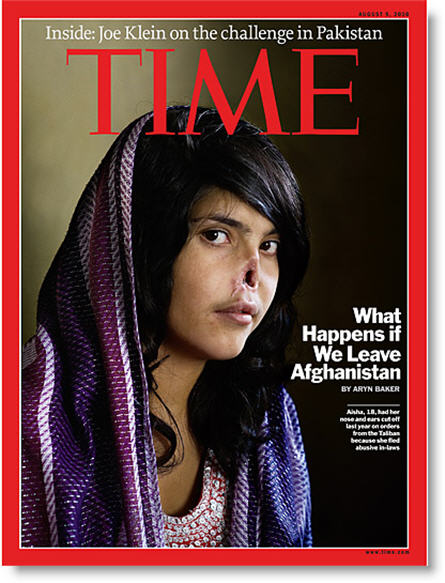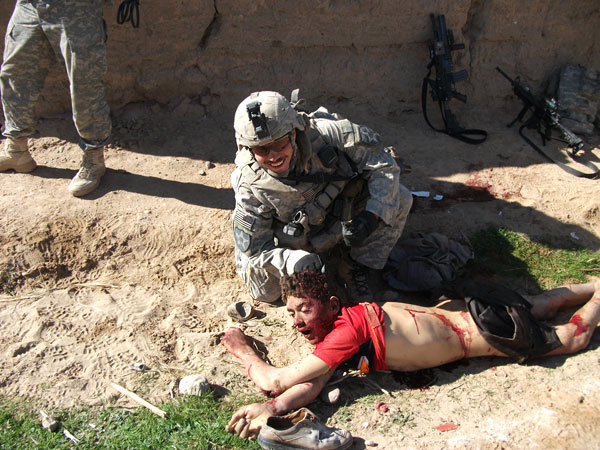by rahnuma ahmed
It’s been more than a week since my friend had said, apnader naamte hobe, but there has not been much of a response from women’s organisations to the government’s back-pedalling on the Women Development Policy regarding equal inheritance shares for Muslim women.
Meanwhile, news has come to light of a group?variously described in media reports as religious extremists, villagers, local influentials, members of the ruling party?having assaulted 28 Bauls (mystics) who had met in a two-day programme, held annually in a Pangsha village (Faridpur) on April 6. Media reports vary regarding the reasons, according to one, their meet was termed anti-Islamic as Baul songs contain lyrics which go against the Quran and Sharia (Blitz, April 8, 2011) ; according to police sources, the house where the programme was held was near the mosque, local leaders requests to Lalon followers had been disregarded (New Age, April 9, 2011). Altercation started soon after the programme began, followed by Bauls being dragged off to the mosque. Their long locks of hair and beard were cut short, mustaches were shaved off, all under the instructions of the local mosque’s imam. They were forced to pray, to utter words of repentance (touba). The thana initially refused to file a case. Only one of the named aggressors, a madrasa principal, has been arrested thus far, all others have reportedly fled the village.
In the meanwhile, Mufti Fazlul Haque Amini, chief of the Islami Ain Bastobayon Committee (Committee for the Implementation of Islamic Law), and chairman of a faction of the Islamic Oikya Jote, has threatened to “paralyse” the country at an hour’s notice if the Women Development Policy is not annulled. Twenty thousand madrasas will “respond to our call immediately.” He also threatened to launch counter attacks if his son, Abul Hasnat, allegedly picked up by law enforcing personnel in plainclothes on April 11, who hasn’t been released yet, was harmed.
Amini claims his son was kidnapped, and that too, on the prime minister’s orders. The Bangladesh Nationalist Party says, the abduction was carried out at the instruction of the government, that Hasnat should be publicly handed over to his family.
We are not against the development of women, says Amini, but it must be in accordance with the holy Quran and Hadis. Members of the current cabinet do not understand the language of the Quran, they interpret it wrongly. We are not against the celebration of the Bangla New Year either. Only against those anti-Islamic activities which were committed on April 14.
Protests demanding exemplary punishment to the assaulters have been held, by left and cultural activists (outside Jatiya Jadughor), by university teachers and students (Rajshahi), by others too, including the Palli Baul Unnayan Sangstha, a recipient of financial support from US embassy (Dhaka) in recognition of helping “save the music of the wandering ministrels of Bangladesh” (ambassador Patricia Butenis, May 24, 2006).
Amini has demanded the resignation of the law minister, and the director general of the Islamic Foundation (April 11). Qawmi madrasas are breeding centres of militants, they should be brought under the education ministry, these comments, attributed to the minister, are denied, he claims he was misinterpreted. The government, adds Amini, blames subversive activities on Islamist groups without conducting proper investigation.
It is worth noting that Amini’s threat to paralyse the country by calling on madrasa students refers to Qawmi i.e., private madrasas which follow the Deobandi curriculum, their growth was patronised by military rulers, generals Ziaur Rahman and
H M Ershad, 1975-1990. That, according to WikiLeaks Dhaka revelations, the UK’s Department for International Development (DFID) has been working with USAid to develop and implement a standardised curriculum for unregulated madrassas as a “common counter-terrorism goal” (Guardian, December 21, 2010). Alia madrassas i.e., the government ones, include science, mathematics, English and vocational training in their curriculum in addition to religious teachings, whereas the Qawmi curriculum teaches only the Quran, hadis, sunnah, and orthodox interpretations of the sharia.
Apparently 300-400 crores taka flow into madrasas annually, spendings unsupervised by the government, a cause for concern which has recently led the DGFI (military intelligence agency) to recommend that a madrasa university be set up. It is a proposal which has the support of US embassy staff who are involved in the project ; according to Afsan Chowdhury, the underlying idea is that a university opened under DGFI scrutiny and control, complemented by US advice, will aid in containing the money and those who have militant interests, that it will assist in tracing the money to their funding sources (DGFI and US embassy push for a madrasa university : concern about incompetence, opinion.bdnews24.com, January 17, 2011).
I find it also worth noting that the regional Counter-Terrorism Centre (for South Asia) is being set up in Dhaka, that the European Union is providing 1.5 million euros alongwith technological assistance, that training will be provided by counter-terrorism experts from European countries, the US and Canada to investigators, police and intelligence agency personnel across South Asia, this includes India, Pakistan, Nepal, Bhutan, Sri Lanka, Afghanistan, Myanmar, possiby some other countries as well. The proposed centre’s Southeast Asian counterpart, SEARCCT (The Southeast Asia Regional centre for Counter Terrorism), was launched in Malaysia in 2003, it offers courses on terrorism financing investigation/money laundering, enhancing port and aviation security, cyber terrorism, counter terrorist laws, chemical and biological terrorism, examining documents for fraudulence etc., etc.
The prime minister’s strong commitment to eliminate all sorts of terrorism and Dhaka’s support for EU causes in international forums and the UN, has been cited as being the reasons for selecting Dhaka. It is a move that has been welcomed by opinion-makers in the country, as the editorial of the leading English daily worded it, the news is a “welcome development” because although Bangladesh is not a “focal point of terrorism,” its “vulnerability to this global menace cannot be overemphasized.” Therefore, we need to “make the most of it” (The Daily Star, October 21, 2010).
What I find mind-boggling is the blind refusal of the majority among those who identify themselves as the thinking sections of society, whether writers or journalists, poets, politicians, women’s movement activists, academics, teachers, researchers, developmentalists, NGOs, business people, entrepreneurs, lawyers, doctors, engineers, other professionals and so on, to intellectually and politically confront the ten-year long war on terror for what it is. A hoax. A fraudulent war, actually being conducted to occupy lands and resources, one that has led to the killing and maiming of millions, to untold sufferings, to irreversible uprooting, dislocation and destruction.
Okay, I grant that for many of them to think (alone, silently, hand-wringingly), let alone lend support to the idea that 9/11 was in all likelihood a false flag operation is irreverent of America Almighty, a sin they would not dream of committing.
But at least the WMD lie, the irrefutable evidence that the invasions of Afghanistan and Iraq were planned prior to 9/11 (Libya too, at least, according to US ret. General Wesley Clark), the living proof that suicide hijackers of 9/11 have-risen-from-the-dead, the US’ open acceptance that Osama bin Laden has long been dead (since December 13, 2001, see Years of Deceit, Veterans Today, December 5, 2009), one would have thought that that would encourage people to think independently. Critically. What prevents people? Fear? Of what? Being irreverent? Possibly. Now that America, as George Monbiot points out, has become a religion, where US leaders see themselves as priests of a divine mission to rid the world of its demons (Guardian, July 29, 2003).
There is a possibility, one that cannot be ruled out, that we are loath to let go of a deeply-nurtured belief that violence is exclusively religious, one that is deeply-rooted in ekattur when we struggled to liberate ourselves from our Pakistani rulers and their local collaborators, in whose eyes we were deemed to be not pukka Muslims, to be filthy Hindus. That we cling to the idea that the violence unleashed by secular forces, despite all the coups, counter-coups, the institutionalised violence committed by civilian governments, repeatedly so, continually so, is accidental. Stray. Aberrations.

And, that it is religious violence, particularly of the Islamically-oriented variety, which targets women. It is a story that was craftily manipulated to invade Afghanistan (Laura Bush, Cherie Blair), that is being regurgitated endlessly by mainstream western media to justify its continued occupation, as does the Time magazine cover of August 9, 2010, the photo of an 18 year old Afghan whose nose was severed as punishment for disgracing her family, underlined by the question, What Happens if We Leave Afghanistan? One that coincided with the release of 76,900 classified Afghan war documents which tell the story of the horrors of war. Afghan women, says a leaked CIA document, “could serve as ideal messengers in humanizing the ISAF [International Security Assistance Force] role in combating the Taliban…” (Anne Holmes, The Face that Launched a Thousand Drones?)

But what about the other photo? In early 2010, a platoon of US soldiers in Afghanistan went on a shooting spree, killing at least 4 unarmed civilians and mutilating several corpses. Members of the “kill team” took scores of photos chronicling their kills. Before these became public, the Pentagon went to extraordinary lengths to suppress them (Rolling Stone, March 27, 2011).?Just in case you are thinking, but these are men killing each other, let me remind you that acts of rape in Abu Ghuraib, of imprisoned Iraqi women were photographed, but totally suppressed. And, just in case you are thinking, that it is all the act of a few bad apples, know that more than 1/3rd of American women soldiers are raped, that 41% of female veterans allege to have been sexually harassed. That more are likely to be raped by a fellow soldier than killed by enemy fire in Iraq. That the US defense department did not cooperate with a House panel investigating sexual assaults of female soldiers by ordering its top official on sexual abuse not to show up despite a subpoena.
We cannot counter terror, by being, by insisting on being, half-blind. To fail to do so, makes one culpable.
